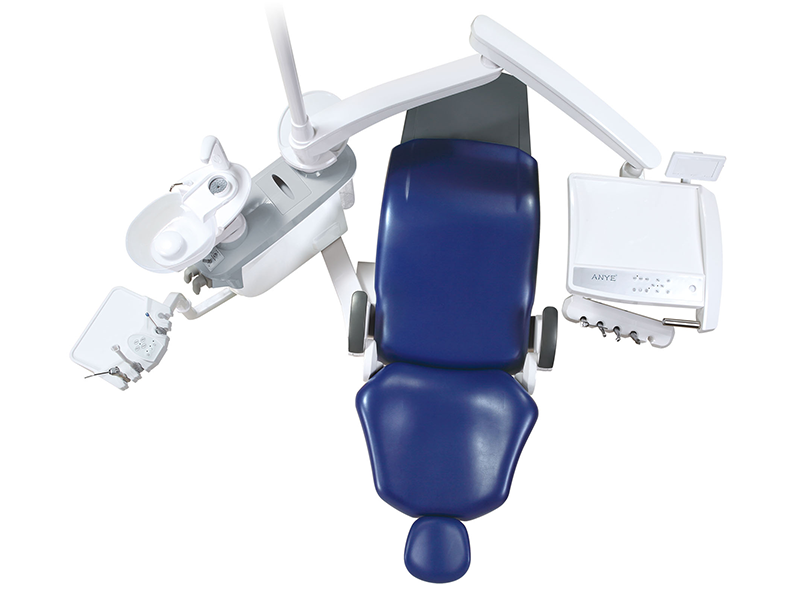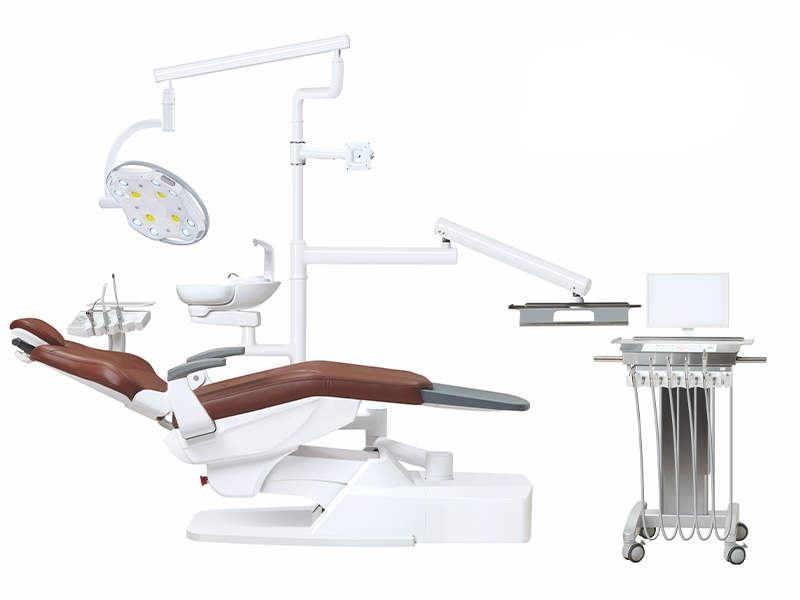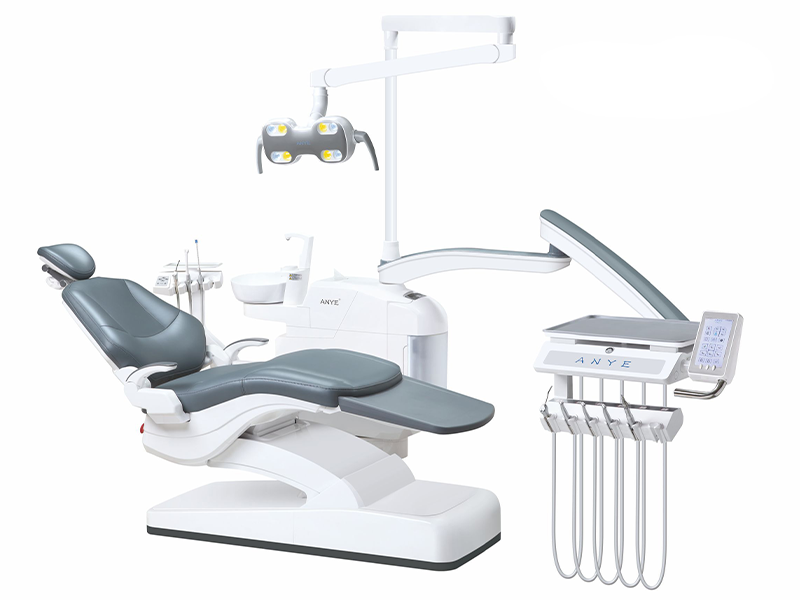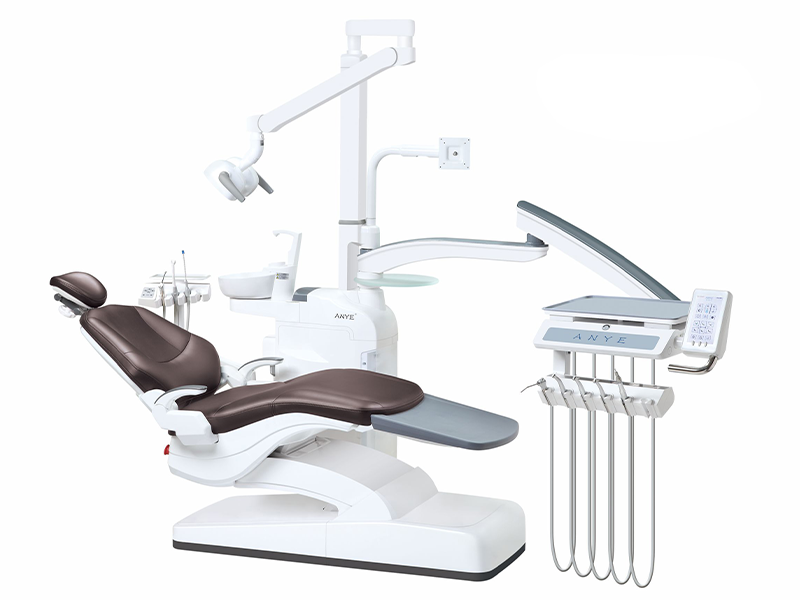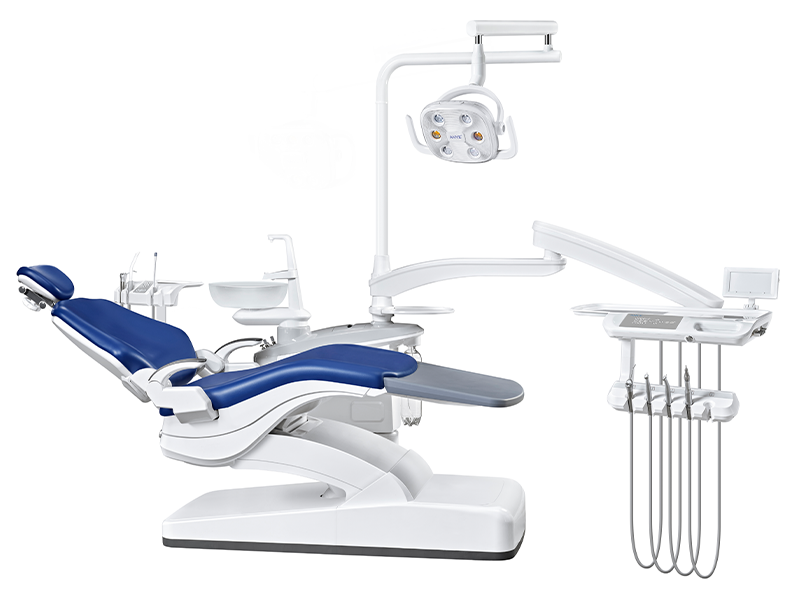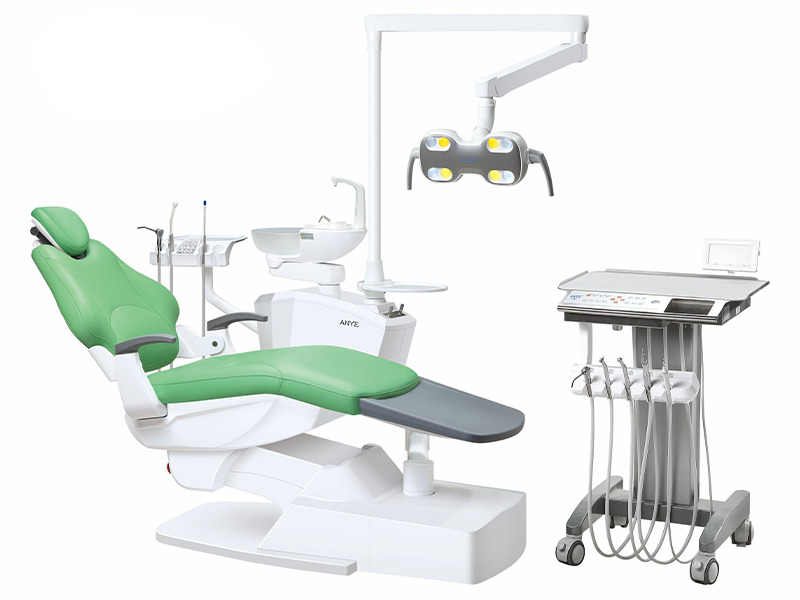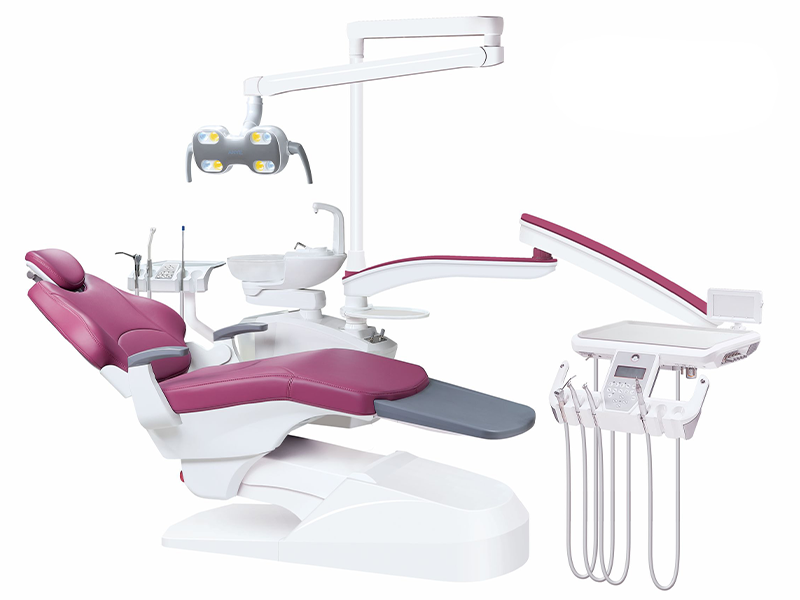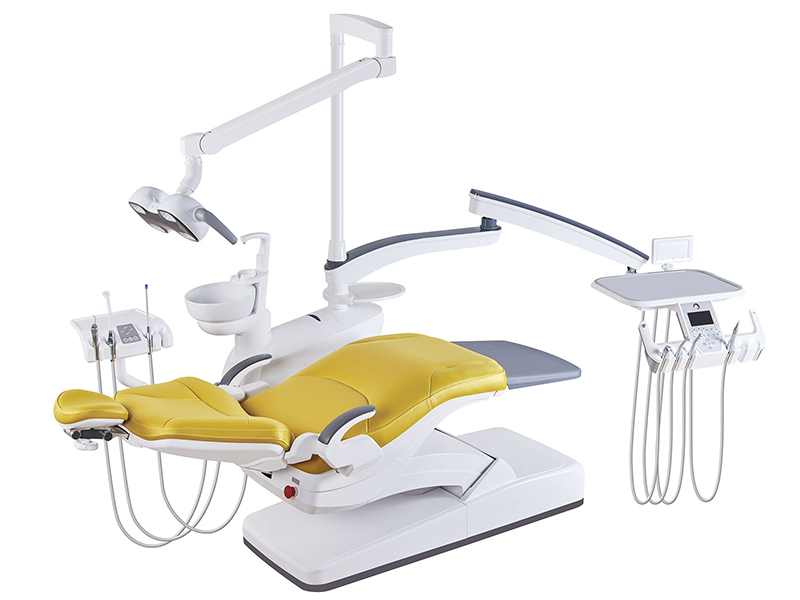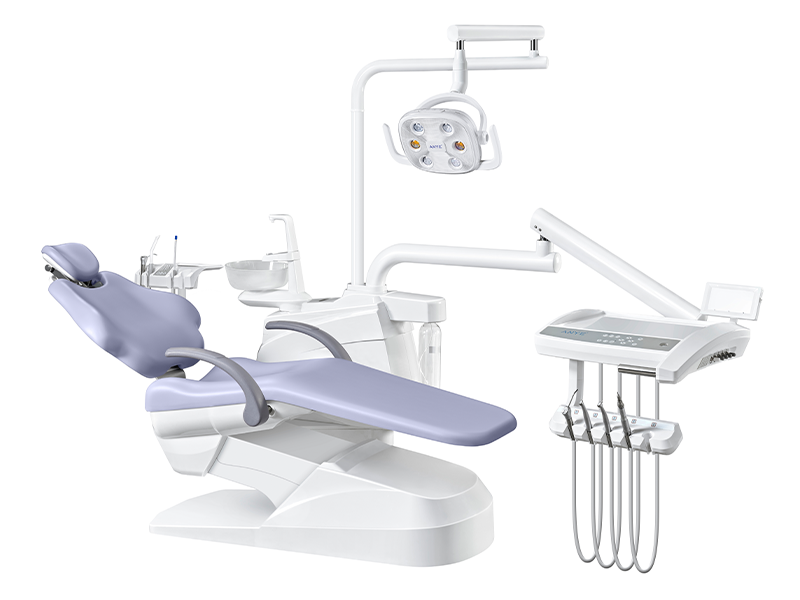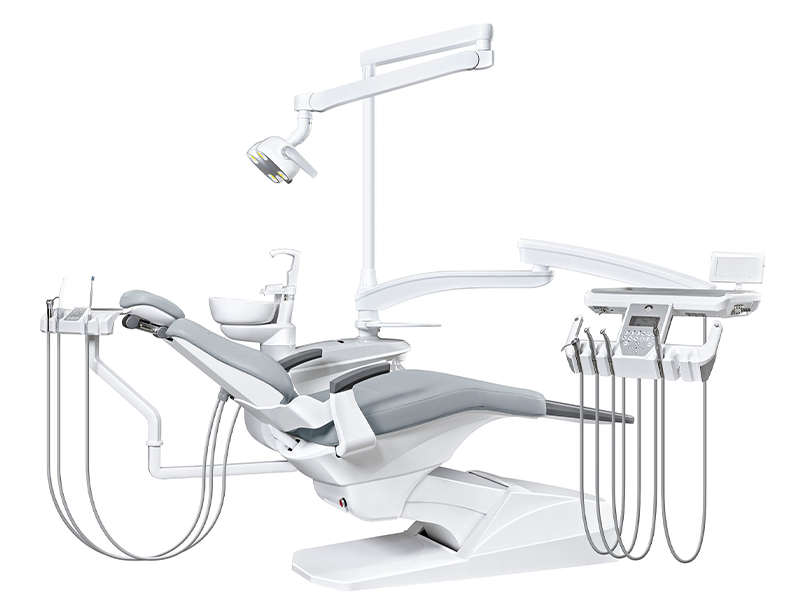The backrest mechanism of a dental chair plays a crucial role in patient comfort and practitioner efficiency. As dental procedures often require extended periods of sitting, the functionality of this component directly impacts treatment outcomes and ergonomics. There are two primary types of backrest mechanisms available in today's advanced dental chairs: synchronized movement and independent movement systems. Each offers distinct advantages depending on specific clinical needs, practitioner preferences, and patient comfort requirements. At Anye Dental, our CE and ISO13485 certified manufacturing process ensures both mechanisms are engineered to precise specifications, supporting dental professionals across our global network spanning 60+ countries. Understanding the fundamental differences between these mechanisms is essential for making informed equipment decisions that will affect your practice's efficiency and patient satisfaction for years to come. This comprehensive guide explores the key characteristics, benefits, and clinical applications of synchronized versus independent backrest movement systems.
Synchronized Movement Mechanism: Definition and Functionality
Synchronized movement mechanisms coordinate the motion of the backrest and seat in a predetermined ratio (typically 2:1), ensuring that when the backrest reclines, the seat automatically tilts in proportion. When a practitioner adjusts the backrest by 20 degrees, the seat simultaneously tilts by about 10 degrees in response. This coordinated motion helps maintain the patient's spinal alignment throughout position changes, significantly reducing the sliding effect commonly experienced in non-synchronized chairs. The engineering behind this system utilizes high-precision hydraulic components that work together through a centralized control system, much like how modern vehicle suspension systems coordinate multiple elements simultaneously. According to ergonomic studies, synchronized movement can reduce patient repositioning needs by up to 37% during lengthy procedures, maintaining optimal treatment field visibility while minimizing practitioner strain. This technology is particularly beneficial for endodontic and restorative procedures where maintaining consistent visual alignment is critical for precision work. Anye Dental's AY-215A Series implements advanced synchronized movement technology with multi-point pressure distribution to enhance this natural coordinated motion.
Independent Movement Mechanism: Flexibility and Customization
Independent movement mechanisms allow separate adjustment of the backrest and seat, providing practitioners with greater flexibility for positioning patients during specific procedures. This system enables clinicians to adjust the backrest angle without affecting the seat position, or vice versa, creating highly customized positions that may not be achievable with synchronized systems. The engineering relies on dual hydraulic circuits with separate control valves that can operate independently while maintaining chair stability. This mechanism is particularly valuable for surgical procedures, implant placements, or specialized treatments where unconventional positioning might be necessary. The independent control system allows for rapid transitions between different clinical positions, reducing procedure time by up to 35% when multiple position changes are required. For practices focusing on surgical or specialized treatments, independent movement offers unparalleled positioning precision. Anye Dental's AY-215C Series, manufactured in our 15,000+ sqm facility using Kuka robots and laser cutting technology, features our most advanced independent movement systems designed specifically for implant and surgical applications.
Comparative Analysis: Synchronized vs. Independent Movement
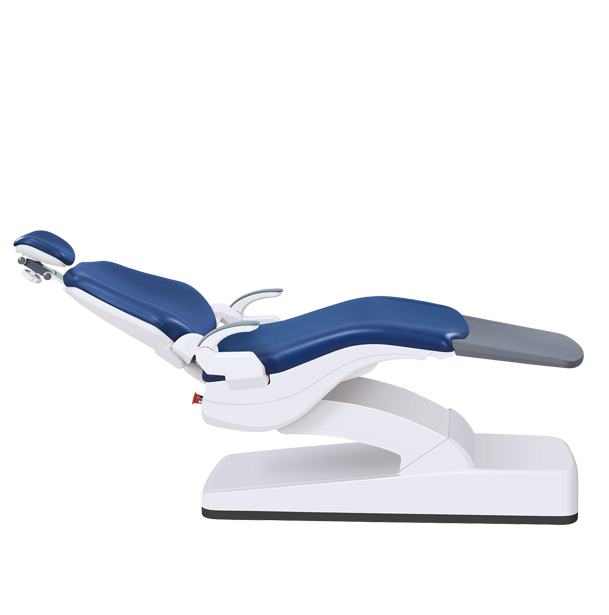
When selecting between synchronized and independent backrest mechanisms, dental professionals should consider multiple factors including clinical specialties, practitioner ergonomics, and patient needs. The table below provides a clear comparison to aid in this decision-making process:
| Feature | Synchronized Movement | Independent Movement |
| Motion Coordination | Fixed ratio (typically 2:1) | Completely separate adjustments |
| Patient Sliding | Minimal (reduces by 37%) | May require repositioning |
| Spinal Alignment | Maintains natural curve | Requires manual adjustment |
| Best For | General dentistry, endodontics, long procedures | Oral surgery, implantology, specialized procedures |
| Positioning Speed | Single adjustment for both components | Multiple adjustments needed |
| Learning Curve | Lower (simpler operation) | Moderate (more controls) |
| Patient Experience | Smoother transitions | More precise positioning options |
| Maintenance Requirements | Annual hydraulic checks | Biannual calibration recommended |
This comparison highlights why many general practices prefer synchronized systems for everyday procedures, while specialty clinics often opt for the flexibility of independent mechanisms. The decision ultimately depends on your specific clinical focus and workflow preferences. Both systems are available across Anye Dental's comprehensive product range, with our expert team available to provide personalized guidance based on your practice requirements.
Clinical Applications and Workflow Implications
The choice between synchronized and independent backrest mechanisms significantly impacts clinical workflow efficiency and treatment capabilities. Synchronized systems excel in general dentistry settings where practitioners frequently transition between consultation positions (upright) and working positions (reclined) with minimal interruption. The smooth, coordinated movement reduces the need to manually readjust patients, saving an average of 3 minutes per appointment according to 2025 workflow efficiency studies. Conversely, independent systems shine in specialized contexts requiring precise positional control, such as implant surgery where specific angles must be maintained regardless of overall patient position. For multi-practitioner practices, consider that synchronized systems have been shown to reduce training time for new staff by approximately 40%, as they require fewer adjustment decisions. However, practices focusing on complex procedures may benefit from the expanded positioning options of independent systems despite the steeper learning curve. Anye Dental's specialized AY-215B5 and AY-215C5 sterilization chairs offer hybrid movement capabilities that provide elements of both systems, ideal for practices that regularly perform both general and specialized procedures.
Ergonomic Considerations for Dental Professionals
The backrest mechanism directly influences practitioner posture and long-term musculoskeletal health. With approximately 42% of dental professionals reporting chronic back pain according to the American Dental Association's 2025 Occupational Health Survey, choosing the right mechanism is crucial for career longevity. Synchronized systems typically promote better practitioner ergonomics by maintaining the patient in positions that naturally accommodate the dentist's working posture. This reduces the need for awkward bending or stretching to maintain visibility and access. Independent systems, while offering more positioning flexibility, require practitioners to be more conscious of their own ergonomic alignment during procedures. Studies published in the Journal of Dental Ergonomics show that synchronized mechanisms can reduce practitioner muscle strain by up to 27% during routine procedures compared to basic chairs without coordinated movement. Additionally, Anye Dental's implementation of AI-driven posture optimization in our premium models utilizes multiple sensors to detect subtle changes in patient positioning and makes automatic micro-adjustments to maintain ideal working conditions for practitioners throughout lengthy procedures.
Patient Comfort and Anxiety Management
Patient comfort significantly influences both satisfaction and treatment outcomes, making the backrest mechanism an important consideration for anxiety reduction and practice reputation. Synchronized movement systems typically provide a more natural feeling transition that mimics regular body movement, which patients often report as more comfortable and less disorienting. This smooth coordination can reduce anxiety in nervous patients by eliminating the jarring sensation sometimes experienced with independent adjustments. According to 2025 patient satisfaction data, practices using synchronized movement chairs report 31% higher comfort ratings from patients during procedures longer than 45 minutes. Conversely, independent systems offer practitioners the ability to make subtle adjustments to relieve pressure points during lengthy procedures without changing the entire position. For pediatric practices, Anye Dental's AY-215D Series offers specialized scaled-down synchronized systems designed specifically for younger patients' comfort and security, featuring colorful, engaging designs and smoother, gentler transitions to reduce anxiety during dental visits.
Maintenance Considerations for Different Backrest Mechanisms
The longevity and reliability of dental chair mechanisms depend significantly on proper maintenance and understanding system requirements. Synchronized mechanisms typically feature fewer moving parts but require precise calibration to maintain the correct movement ratio. These systems should undergo annual hydraulic checks and fluid analysis to ensure optimal performance, as recommended in Anye Dental's comprehensive maintenance guide. Independent systems, with their separate control circuits, generally require more frequent maintenance checks—ideally biannually—to ensure all components move smoothly and respond accurately to adjustment commands. For both systems, regular inspection of O-rings, seals, and hydraulic fluid levels is essential to prevent leaks or sluggish response. Practices should maintain detailed maintenance logs and schedule professional servicing based on usage intensity and manufacturer recommendations. Anye Dental offers extended 7-year warranties on hydraulic components in all our dental chairs, with certified technicians available to perform comprehensive annual servicing that includes calibration, fluid replacement, and safety checks to ensure uninterrupted operation.
Technological Advancements in Backrest Mechanism Design
Recent innovations have revolutionized dental chair backrest mechanisms, with AI integration and IoT connectivity leading the way in 2025. Modern synchronized systems now incorporate pressure mapping technology that dynamically adjusts the movement ratio based on patient body type and weight distribution, providing customized comfort while maintaining the benefits of coordinated motion. Independent mechanisms have evolved to include haptic feedback systems that alert practitioners when they achieve optimal access angles for specific procedures. Additionally, advanced memory systems can store and recall precise position combinations for various treatments and individual patients, significantly streamlining workflow. Anye Dental's latest innovations include chairs with smart adjustment systems featuring real-time feedback on ergonomic positioning and predictive movement that anticipates the next required position based on procedure type. Our most advanced models even integrate with practice management software to automatically adjust chair positions based on scheduled procedure types as patients are seated, reducing setup time and improving practice efficiency.
Emergency Protocols and CPR Readiness
In emergency situations, the dental chair backrest mechanism plays a critical role in rapid patient repositioning for CPR and emergency response. Synchronized mechanisms generally offer advantage in emergency scenarios, with one-touch controls that quickly transition patients to a flat position suitable for CPR. According to a 2025 study published by the European Resuscitation Council, synchronized systems demonstrate 48% less vertical displacement during chest compressions compared to chairs with curved backrests, providing a more stable platform for emergency procedures. Independent mechanisms may require multiple adjustments to achieve the optimal emergency position, potentially adding crucial seconds to response time. All Anye Dental chairs incorporate emergency override functions that immediately transition to a CPR-ready position regardless of previous settings, with the AY-215B5 and AY-215C5 models featuring additional stabilization systems specifically designed to enhance platform rigidity during emergency procedures. When selecting a dental chair, practices should prioritize models with clearly marked emergency controls and test CPR positioning capabilities as part of regular staff training protocols.
Making the Right Selection for Your Practice
Selecting between synchronized and independent backrest mechanisms requires evidence-based analysis of your specific practice needs. This decision significantly impacts clinical workflow, with synchronized systems saving an average of 3 minutes per patient transition in general dentistry settings, while independent systems provide the positioning precision required for implant placement with accuracy rates up to 94.6%.
Practice specialization is the primary consideration: - General dentistry and endodontics: Synchronized systems excel with their coordinated 2:1 ratio movement that maintains spinal alignment throughout position changes - Surgical procedures and implantology: Independent mechanisms provide critical angular precision with separate hydraulic circuits operating at 0.5-degree increments - Multi-specialty practices: Consider Anye Dental's hybrid AY-215B5 and AY-215C5 models featuring dual-mode operation with one-touch switching between synchronized and independent functions
Patient demographics also influence this decision, with practices serving elderly populations reporting 31% higher comfort ratings with synchronized movement chairs during procedures exceeding 45 minutes. Practitioner anthropometrics matter too—clinicians above 185cm height typically benefit from independent systems that allow greater customization of working angles.
Contact Anye Dental's technical specialists at https://www.anyedental.com/ to arrange a personalized consultation and demonstration. Our comprehensive pre-purchase analysis includes workflow assessment, space evaluation, and practitioner ergonomic profiling to ensure your investment supports optimal clinical outcomes for years to come. Experience why leading dental facilities in 60+ countries trust Anye Dental's precision-engineered chair mechanisms, backed by our industry-leading 7-year hydraulic warranty.

